The Complete Guide to Boba Tea Packaging
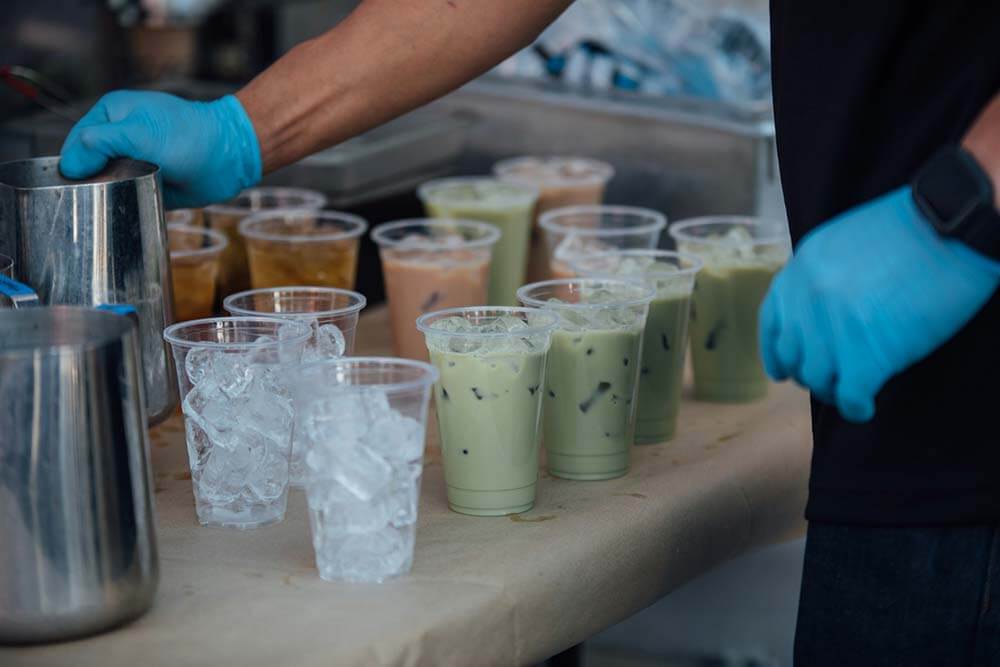
Nowadays, boba tea seems to have become one of the must-have drinks for men, women, young, and old after work and leisure. Therefore, milk tea shops are doing very well in countries all over the world. However, do you know what packaging materials you need to present the drink intact to customers after making a cup of milk tea?
What Factors Do We Need to Pay Attention When Purchasing Boba Tea Packaging Materials?
The boba tea packaging material includes boba cups and lids, boba tea straws, sealing machines, and cup carriers. What do we need to pay attention to when purchasing them?
Size
According to the different eating habits of people in each country or region, the size of the boba tea cups purchased needs to meet the habits of local people. Ensure that other auxiliary materials, such as cup lids, cup holders, and drinking straws are compatible with the actual drink size of the cup.
Material
Disposable plastic tableware has caused serious environmental pollution, so when we choose the material of boba tea cups, cup lids, cup carriers, we need to choose eco-friendly material. Preferably biodegradable or even compostable materials.
Quality
The boba tea cup must be sturdy, the cup lid needs to secure and fit the cup, the boba tea straw must hold enough time for consumers to finish the drink, and the cup holder also needs to be strong enough to hold the cup in place without tipping over caused pearl milk tea to leak.
Cost
After choosing your ideal boba tea packaging material, you need to check the price from the supplier, and whether the cost is within the budget. If you are not sure about their quality, you can ask your suppliers to send you a few samples to check the quality, then decide which supplier to choose.
Types of Boba Tea Cups
When we talk about the types of boba drink cup, there are many materials and different designs, let’s take a look at them in detail.
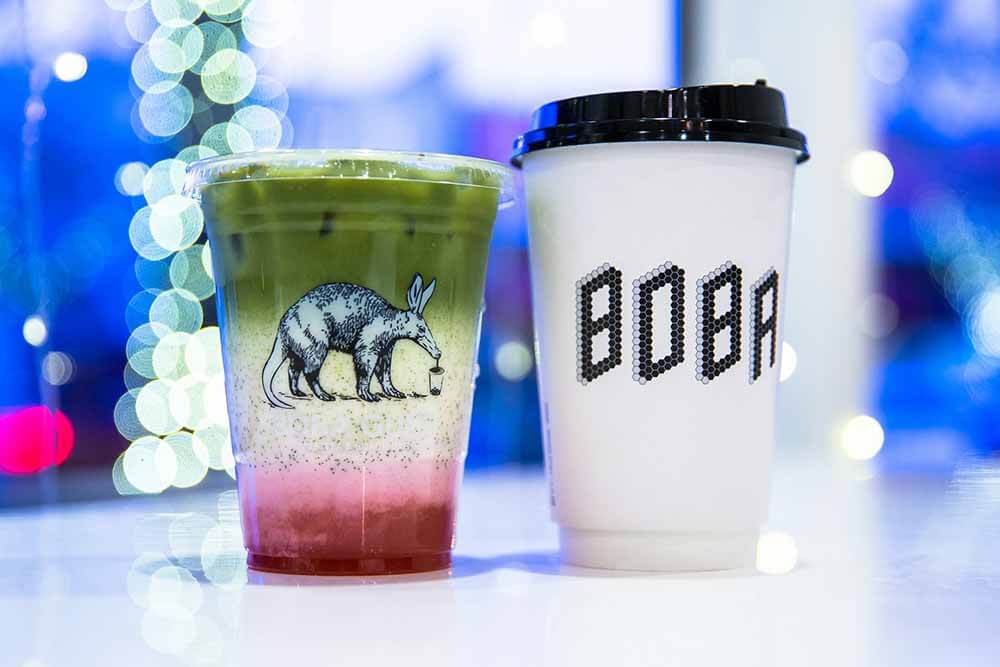
Boba Plastic Cups
Plastic is the most commonly used material to make boba drink cup material because this material is durable, cheap, and has high transparency. But, using plastic to make disposable tableware will cause very serious environmental pollution.
Advantages of Boba Plastic Cups
- Lightweight
- Shatter-resistant
- Easy to form
- Cheap
- High transparency
- Heat resistant
- Durable
Disadvantages of Boba Plastic Cups
- Serious environmental pollution
- Hot drinks may cause harmful substances in plastic to harm the human body
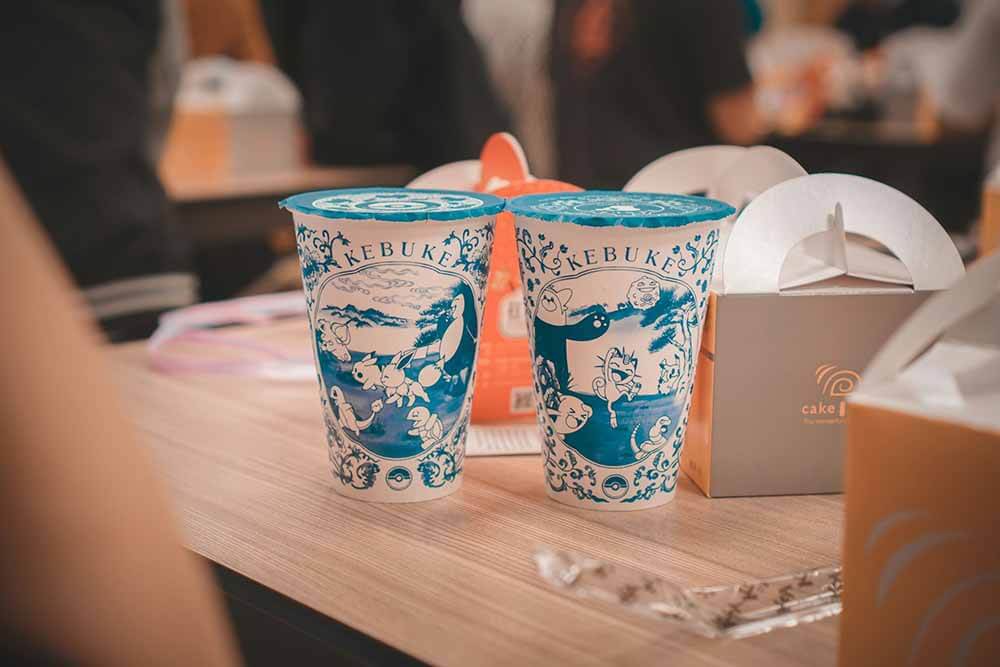
Boba Paper Cups
Paper is another material to make bubble tea cups, but the paper needs to be coated with a layer of plastic or wax to prevent leaks and maintain the cup’s structure. Paper is a more eco-friendly material than plastic, with greater customization flexibility.
Advantages of Boba Paper Cups
- Eco friendly
- Printing complex patterns to promote brand
- Lightweight
- Heat resistant
Disadvantages of Boba Paper Cups
- There are potential risks of leaking if the pearl milk tea stays in the cup for a long time
- Not as strong as plastic cups
- Higher cost than plastic cups
- Impact the environment due to resource use and non-recyclable linings

Glass Boba Cups
Glass boba cups is a reusable drinking cups to replace plastic and paper boba cups, more eco-friendly. Made from high-quality glass with an outer appearance design, make your consumers enjoy pearl milk tea happily.
Advantages of Glass Boba Cups
- Reusable and recyclable
- Strong enough to hold heavy drinks without leakage
- Higher-end appearance design
- No toxic and no chemical
- Heat resistant
Disadvantages of Glass Boba Cups
- Glass is more brittle and breakable
- Heavyweight
- Higher cost than paper and plastic cups
- Need to clean, compared with the disposable drinking cups
- May harm to employees and customers if the glass breaks
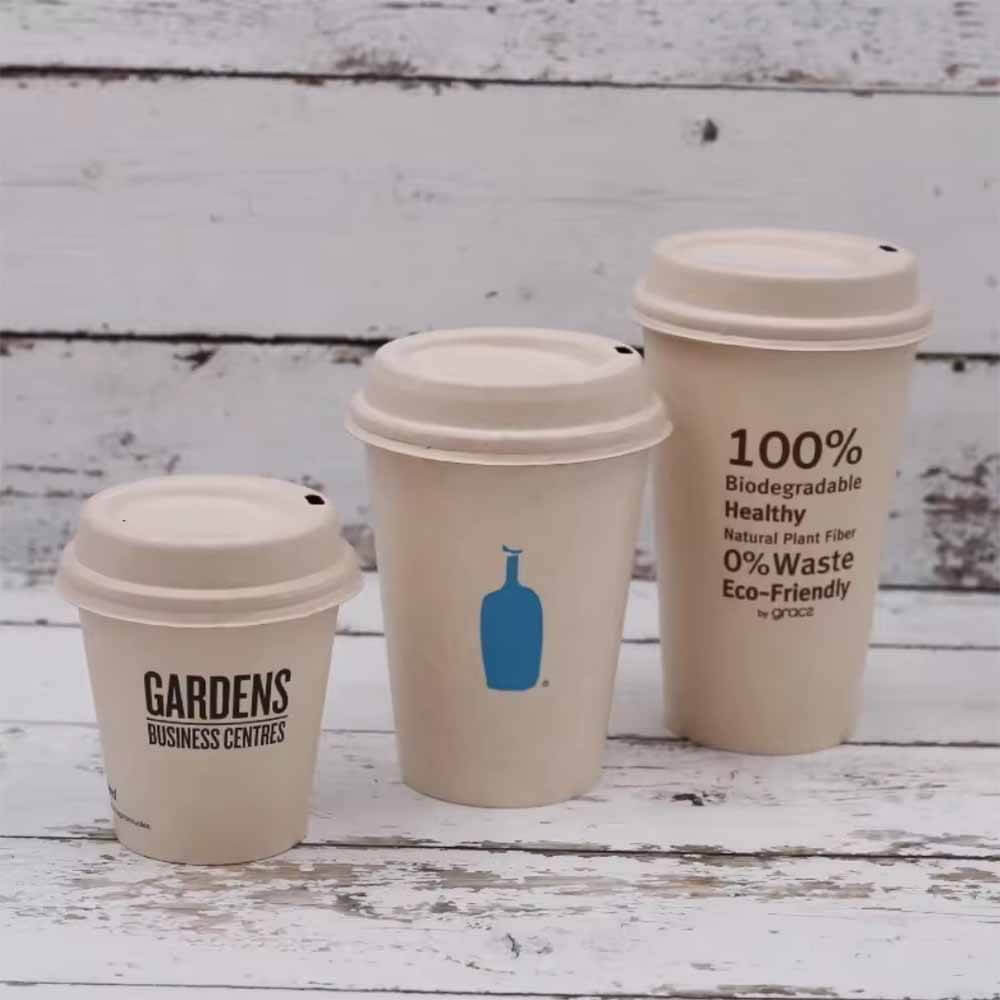
Compostable Boba Cups
Compostable boba cups are mainly made from sugarcane, cornstarch, or bamboo fiber, they are biodegradable and compostable, 100% no harmful to our environment. There are also disposable drinking cups, a great replacement for plastic and paper cups.
Advantages of Compostable Boba Cups
- Does not contain any chemicals
- Biodegradable and compostable
- No toxic
- Heat resistant
Disadvantages of Compostable Boba Cups
- Not as strong as plastic cups
- Can not hold the drinks for an extended period
- Higher cost than plastic and paper cups
Sizes of Boba Tea Cups
Generally, the standard size of boba tea cup is 16 oz and 24 oz. But it can also be customized according to different eating habits in different places.
Boba Drink Sealer
If you are going to run the business of boba tea, you must have a boba drink sealer. This machine can seal the plastic film on the cup within a few seconds. Using the boba cup sealing machine can improve your efficiency in preparing the order and reduce the risk of boba tea leakage from the top of the cup. The machine’s working efficiency can be customized by the machine manufacturer.
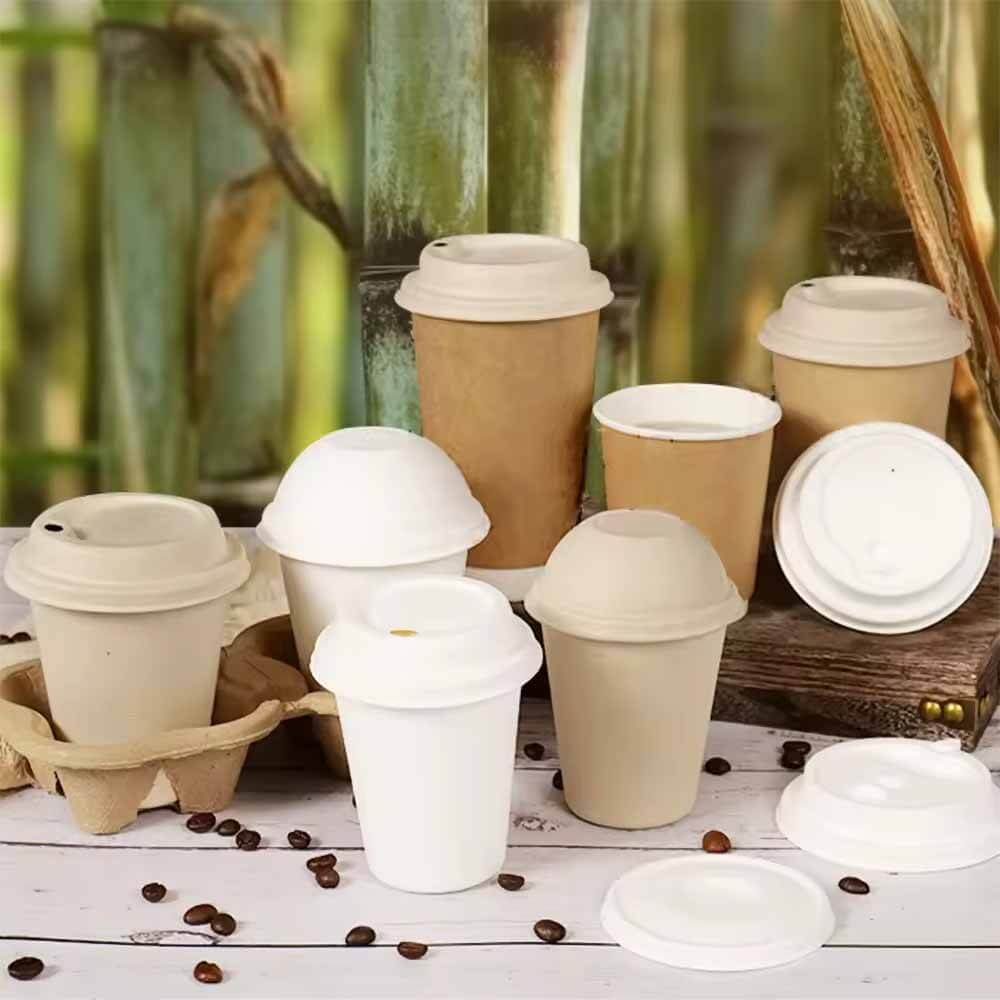
Types of Boba Cup Lid
The most widely used types of boba cup lids are flat lids and dome lids.
Flat Lids
Here, the flat lids used for boba tea cups also can be called snap-on lids, this is a good choice, even if you don’t have a cup sealing machine. The flat lids can fit the cup rim tightly, minimizing the risk of beverages leaking from customers’ cups.
Dome Lids
The dome lids are designed to provide extra space, you can put more whipped cream, slushed beverages, or lots of ice. The dome lids also enhance the presentation of the drink, Make your drink look more appealing.
Types of Boba Tea Straws
When we talk about disposable boba tea straws, there are 2 main types: plastic drinking straws and paper straws. But, when they are used to drinking boba, their size must be larger than the boba to let them go through the drinking straw. The diameter of the boba tea straws should not be less than 12mm.
Plastic Boba Straws
The plastic boba straws are mainly made from PE ( polyethylene ) or PP ( polypropylene ). In the past, they were widely used in sipping beverages, but the environmental problems caused by this material have threatened the living environment.
Advantages of Plastic Boba Straws
- Durable
- Cheap
- Resistance to moisture and temperature
Disadvantages of Plastic Boba Straws
- Non-biodegradable
- Low recycling rates
- Chemicals and microplastics will harm the human body
- Many countries and regions have banned plastic packaging material
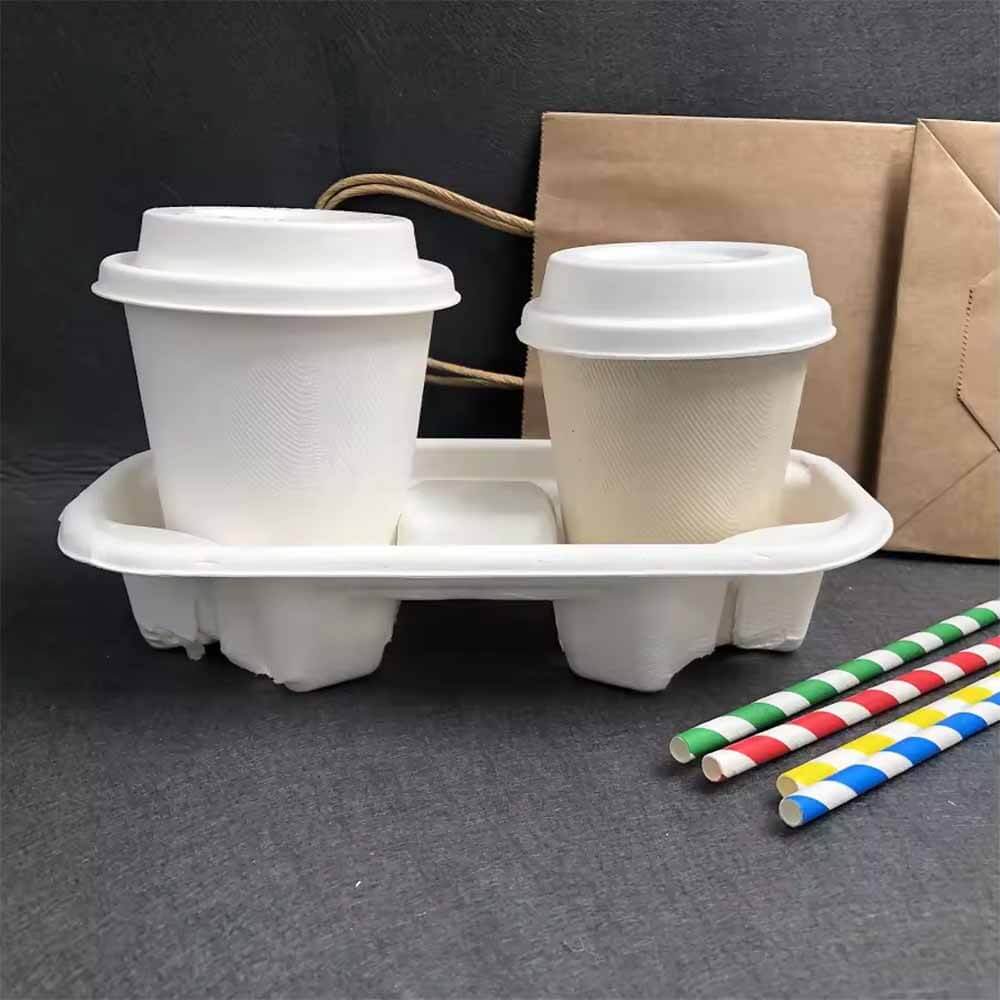
Paper Boba Straws
Paper boba straws are an eco-friendly alternative to instead of plastic straws, they can be made into large sizes with various colors and patterns, which can be a great choice for your themed restaurant or festive mood.
Advantages of Paper Boba Straws
- Biodegradable
- The government supports eco-friendly alternatives to plastic straw
- More flexibility in customization
- No harmful chemical
Disadvantages of Paper Boba Straws
- Stay too long in the drink will become soggy
- Higher cost than plastic straws
- Less effective for hot beverages
- May affect the drinking experience
Boba Tea Cup Carrier
When bubble tea needs to be delivered to customers through takeaway services, cup carriers can reduce the risk of tipping during the delivery of bubble tea. Milk tea cups come in different sizes, and cup holders also have a variety of different styles. When purchasing, you need to purchase to go cup holder based on actual conditions.
Eco March is the manufacturer of biodegradable and compostable disposable tableware in China. Whether you need biodegradable drinking straws or compostable food containers, we are definitely your first choice!
You may also interested in:
Eco friendly cup carriers selection guide
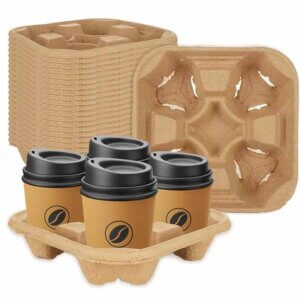
John Q
John Q is Eco March’s Product Manager. With 5 years of prior experience in the food industry after graduating from university, he has been an integral part of Eco March. He excels in creating and developing eco-friendly food packaging products with a keen focus on enhancing the consumer experience.


